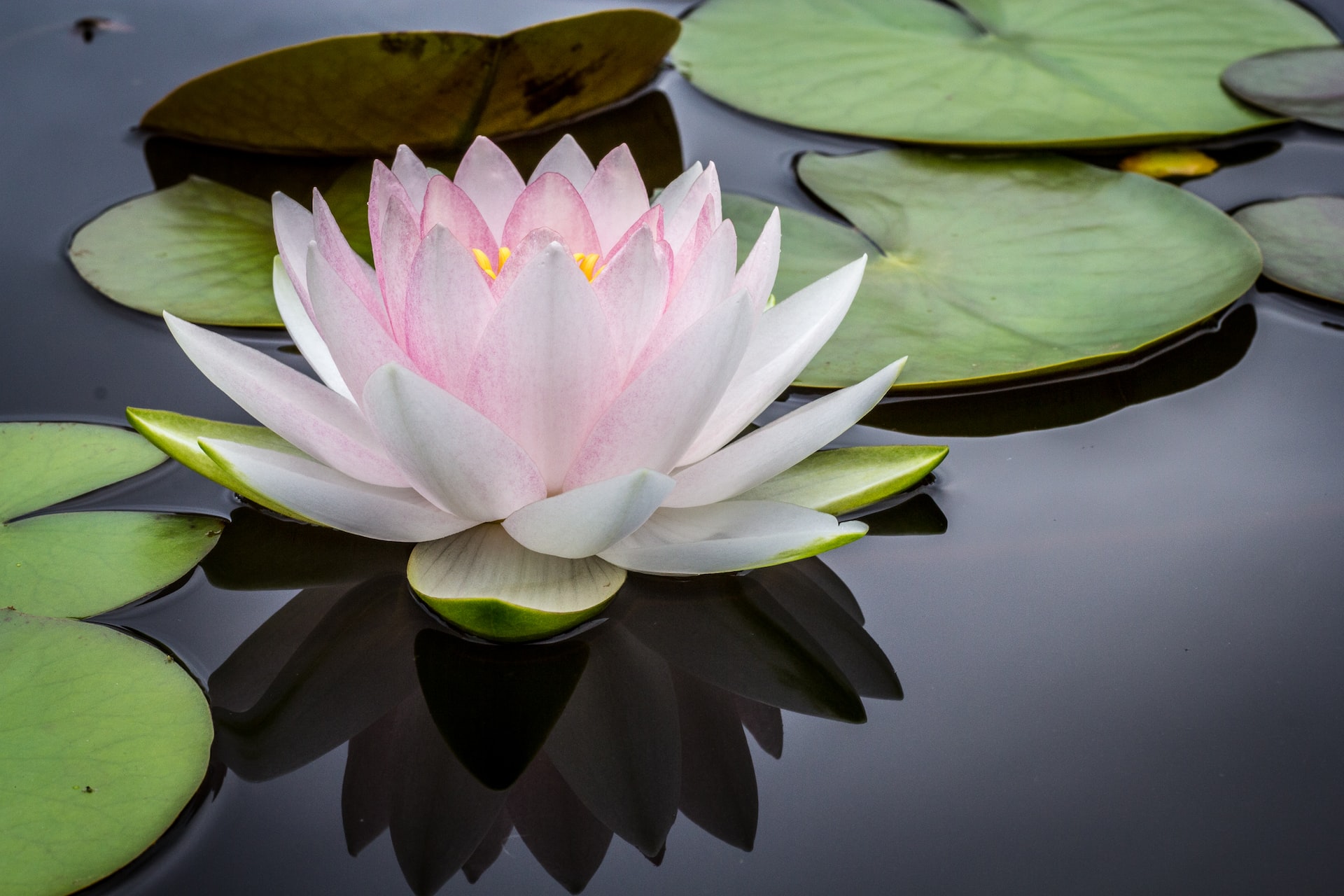Spirituality • 02/06/2023
What Is Zen Meditation? 5 Tips for Starting Your Practice

Revivalist is a reader-supported endeavor and our posts may contain affiliate links. When you buy through links on our site, we may earn an affiliate commission.
You might know that meditation offers impressive health benefits but don’t understand much about the various styles. Perhaps you associate zen meditation with Buddhism and shy away because you fear your religious beliefs will conflict or have a learned distrust of spiritual practices.
That’s okay — you can reap the perks of this practice without converting. Indeed, the four Zen dicta as taught by Bodhidharma, often considered the founder, read as follows:
A special transmission outside the scriptures
No dependency on words and letters
Pointing directly to the human mind
Seeing into one’s nature and attaining Buddhahood
You can see that, although zen meditation stems from Zen Buddhist practice, it’s about seeking your personal spiritual truth, not following specific religious texts or edicts. Therefore, it’s inclusive to anyone, regardless of their faith system.
Practitioners report perks like a greater sense of inner calm and confidence, increased empathy and awareness and clarity of thought. Are you ready to explore the benefits? What is zen meditation? Here’s an overview and tips for starting your practice.
The History of Zen or Zazen
Zen Buddhism arose in India during the 5th century BCE, growing from the experience of Shakyamuni Buddha, who transferred the knowledge via word of mouth directly to his disciples. The monk Bodhidharma took the teaching to China during the Tang dynasty, and the monk Dogen spread it to Japan in the 13th century BCE.
Unlike other Buddhist schools of thought, Zen doesn’t rely on books or printed scripture. Rather, it’s passed directly from teacher to student through long, intense study that involves sitting in meditation. Meditation isn’t a part of Zen Buddhism like kneeling is a part of a Catholic ceremony. Meditation is Zen, clearing the mind or “thinking about not thinking.” It’s a way of fully immersing yourself in what it means to be human.
The Zen Buddhist writings that exist combine a liberal sprinkle of Taoism, Confucianism and reflections from various teachers. They rarely mention the Buddha.
What Is a Koan?
You might have heard the word “koan” associated with zen meditation, perhaps even pondered sayings like, “what is the sound of one hand clapping?” Not all zen schools of thought embrace koans. This paradoxical-seeming word or phrase helps focus the mind, shutting out other thoughts. Contemplation often reveals spiritual truths, and you can find English-language collections such as “The Gateless Gate” and “The Blue Cliff Record” to use in your practice.
How to Sit in Zazen
Zen meditation typically occurs sitting, and posture is essential to ensuring the deep breathing necessary to reach a contemplative state. There are five primary postures you may assume, depending on your comfort and flexibility level.
- Burmese position: Also called an easy sukhasana in yoga, this posture involves resting your tailbone on the floor with your legs crossed comfortably in front of you, one foot in front of the other, back straight.
- Half-lotus: This posture has you cross one foot on top of the opposite thigh, helping keep your spine straight.
- Full lotus: You might not like this posture if you have bad knees. Otherwise, cross both feet on top of the opposite thigh, sitting cross-legged. You’ll feel your spine elongate, although you may need a zafu to keep your knees on the floor.
- Seiza: This posture is a knee-friendly alternative for some. Kneel on the floor, using your heels as a cushion or place a pillow between your feet to rest your bottom.
- Chair: Those with mobility challenges can practice zen meditation in a chair. Ensure your feet can comfortably reach the floor and your spine is straight and supported with a natural curve.
Most people who sit on the floor find zen meditation or zazen more comfortable with the help of a zafu. These special spherical cushions help maintain your alignment and rest your knees on the floor if you take lotus.
What Do You Think About in Zen Meditation?
Zen meditation is similar to mindfulness in that you focus your attention. However, the goal here isn’t to concentrate on a particular thought or object but to build general awareness of the human condition. Many pure zen practitioners, therefore, attempt to clear their minds, listening only to their bodily sensations and external stimuli.
However, it’s natural for thoughts to intrude. Think of it this way: the goal of zen meditation is to go from drowning in a river to sitting peacefully by the stream’s side, watching the water flow. Instead of actively engaging with each thought, which can lead to rumination, you observe it float by without attaching weight or judgment to it.
If you must have a focal point, use a koan. Another technique is to focus only on the breath. You can recite a brief saying from spiritual leader Thich Nhat Hanh to center your awareness, mentally repeating, “Breathing in, I am aware that I am breathing in — breathing out, I am aware that I am breathing out.”
Tips for Starting Your Zen Meditation Practice
Do you want to get started with zen meditation? Here are five tips for creating your practice.
1. Create a Sacred Space
While advanced practitioners can meditate anywhere, a sacred space helps you get into the groove. Create a quiet spot where you can place your zafu and make it suit your tastes. Use natural objects like flowers and fountains and engage all your senses. Dim the lights and use an aromatherapy mister to fragrance the air.
2. Make Time for Your Practice
You might be one of the many people who feel guilty about taking time for self-care. However, zen meditation takes time — it’s the only way to reap the benefits. Schedule a few minutes at the beginning or end of each day to engage in a zen meditation session. Write it in your planner to make it “official” and treat it with as much regard as you would a work or doctor’s appointment.
3. Understand the Frustrations
Clearing your mind and becoming fully aware of the present moment is tough. It’s a lot harder than it sounds. It can even be dangerous for some folks with trauma histories who might get caught in a rumination trap that increases their symptoms. If you fall into this camp, please consider working with a qualified therapist who can help you process challenging emotions arising from your practice.
Otherwise, expect it to be challenging to clear your mind. You might feel more frustrated than calm at first — this is normal. Smile gently to yourself and try to redirect your energies to watching your thoughts go by instead of engaging with them, but forgive yourself when your mind wanders down old familiar paths instead of braving the thicket of immersion in the present.
4. Rally Support From the Troops
Meditation can look like sitting and doing nothing to outsiders, like your spouse or toddlers craving your immediate attention. Let your household members know what you’re doing and why — explain that you need a few minutes of quiet, undisturbed time to focus on your practice. Better yet, encourage them to do it with you — even children can reap considerable benefits from zen meditation.
5. Expand Your Practice to Daily Life
This last tip will likely occur naturally if you dedicate yourself to your practice. However, the process goes faster if you actively encourage it. Look for spaces where you can inject meditation into your day in unexpected places.
Are you stuck in an endless grocery store line? Tied up in airport security? Instead of stewing, use that time to clear your mind and experience your emotions amid all the swirling stimuli from a place of detached curiosity.
What Is Zen Meditation?
What is zen meditation? Although it arose from religious practice, you don’t have to follow a particular faith system to reap the benefits.
Now that you understand the basics of zen meditation, why not begin your journey? The tips above will get you started on your road to improved inner calm and confidence.
Subscribe to Our Weekly Newsletter
We would love to connect deeper with you!


